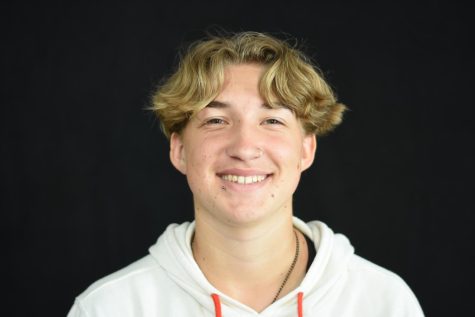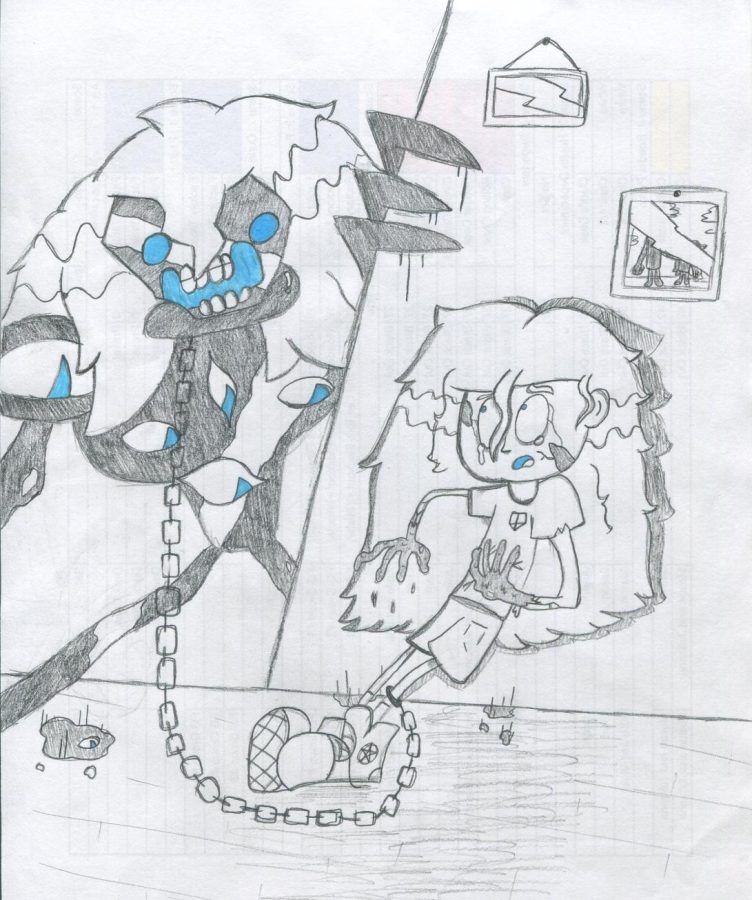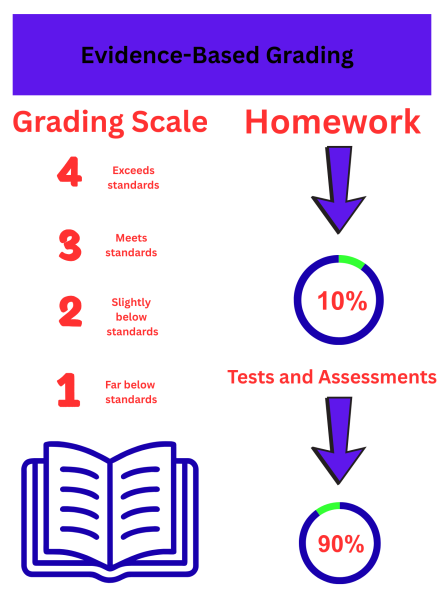Portrayal of Mental Health on the Big Screen
A glance at the long time influence of horror movies on mental health.
The illustration describes how mental illnesses can manifest into grotesk beings of oneself, never letting them be free by the chains of sorrow shackled around the illness and its host. The spreading of the illness onto its host demonstrates how mental illness cannot and will not stop until oneself is corrupted and has become an empty husk of their former self, unless they seek the help of a professional.
Horror films have been popular for decades, featuring different captivating scenes such as masked serial killers chasing children, groups of friends going to a haunted house in town or the crazy patient escaping a facility, going on a rampage. While these movies can be thrilling, we can’t help but wonder what drives people to do such things.
Labels such as crazy, anti-social, psychotic and psychopath have commonly been used to describe people such as Michael Myers, from the Halloween franchise, as well as Jack Torrence, the father in the film, The Shining. These labels created stereotypes which gave society motivation to ignore and mistreat people with mental health conditions. Up until the twenty-first century, these labels were never questioned.
“In nearly every horror movie, the killer is portrayed as ‘crazy’. An archetype that not only instills a sense of fear in the viewer but paints a dangerous and disturbing picture of what someone with mental health issues looks like,” said Psycom writer, Jennifer Tzeses.
The recent increase in mental health awareness has brought up the debate of whether or not those with mental illnesses are dangerous to themselves and others. Harmful stereotypes grow, creating a less stable world for those who already don’t have the resources to get help.
The main antagonist, played by James McAvoy, of the 2016 film Split, is portrayed as having Dissociative Identity Disorder or DID. Those with DID have reported that the film is a bad representation, making an image of a fantasized idea about those with DID being a serious danger to society.
“They’re feeling discriminated against … but this is nothing new,” said YouTuber, Joubert, in CNN article.
Although horror movies are not a great representation of individuals struggling with mental illness, they bring attention to how serious mental health is, something governments, schools and parents are not willing to speak up about.
Modern horror movies, now more than ever, have started to talk about the effects of mental illness. Although there are non-horror films that discuss mental health, the horror genre seems to be most involved in the topic. With this influence they have the best opportunity to share the realities of mental health.
A recently released film, SMILE, talks about the suspicion and lack of trust in patients. Those with mental illness are seen as untrustworthy and scary. Even those with seemingly more stable mental health, people can still deal with trauma and mental illness.
This misrepresentation creates a lack of safety in those searching for professional help, possibly stopping them from doing so. In most films, mental hospitals are portrayed as cold, dark and moldy places. These locations are no longer like this, they aren’t perfect but they are safe places for people to seek help.
Getting help shouldn’t be represented as a bad or weak thing. Reaching out for help is one of the bravest things someone can do, especially with so many people telling them that their feelings aren’t valid.
It is never too late to spread awareness and create change. Allowing yourself and others to learn the truth can break up these stereotypes, letting the word grow up. Don’t be afraid to ask for help, no matter what some people or media say about your mental health. Put yourself first.
Suicide Prevention: 988, or 1(800)273-8255
Your donation will support the student journalists of San Juan Hills High School. Your contribution will allow us to cover our annual professional memberships as well as equipment and other costs associated with bringing you high quality student journalism.

Carter Van Zanten is currently a senior, and this is his first year on The Express staff. This year, he is the sports editor of the paper. At SJHHS, Carter...






